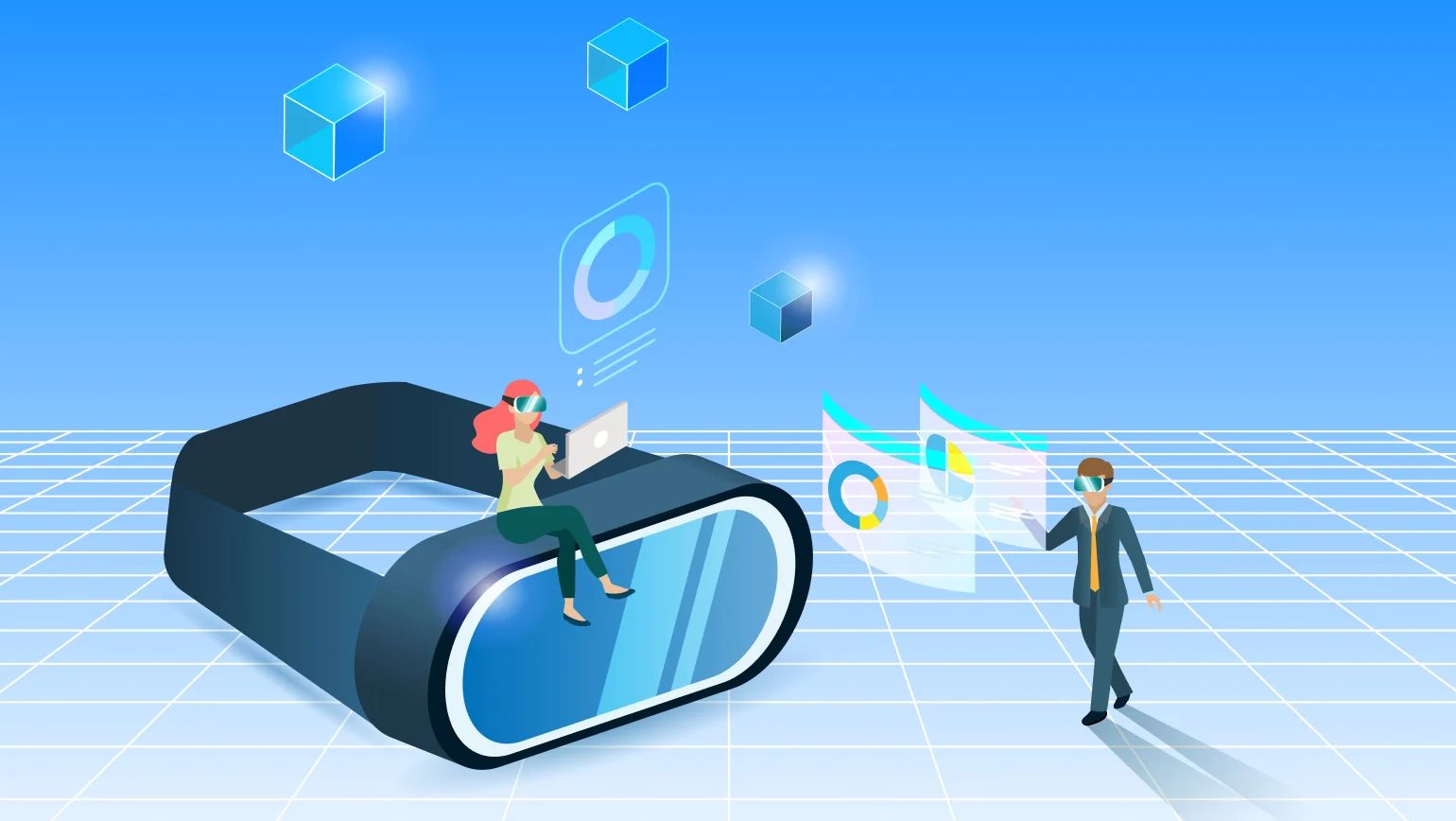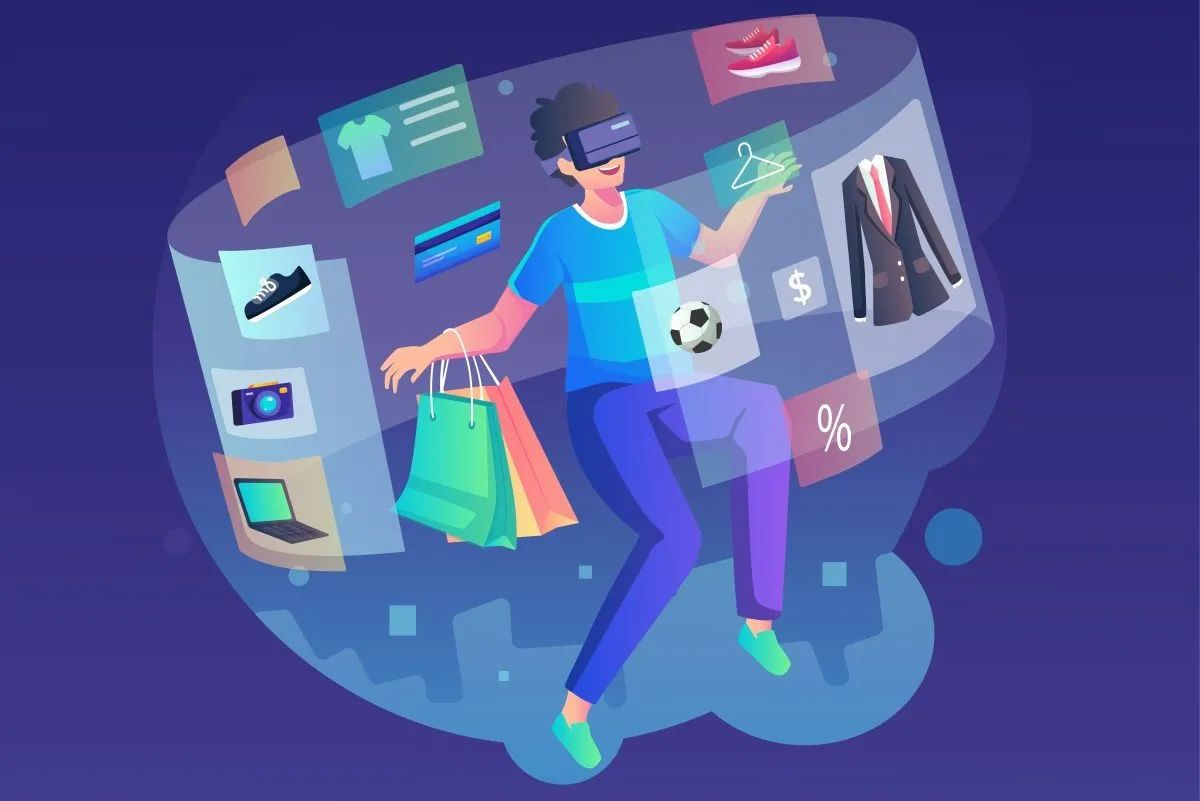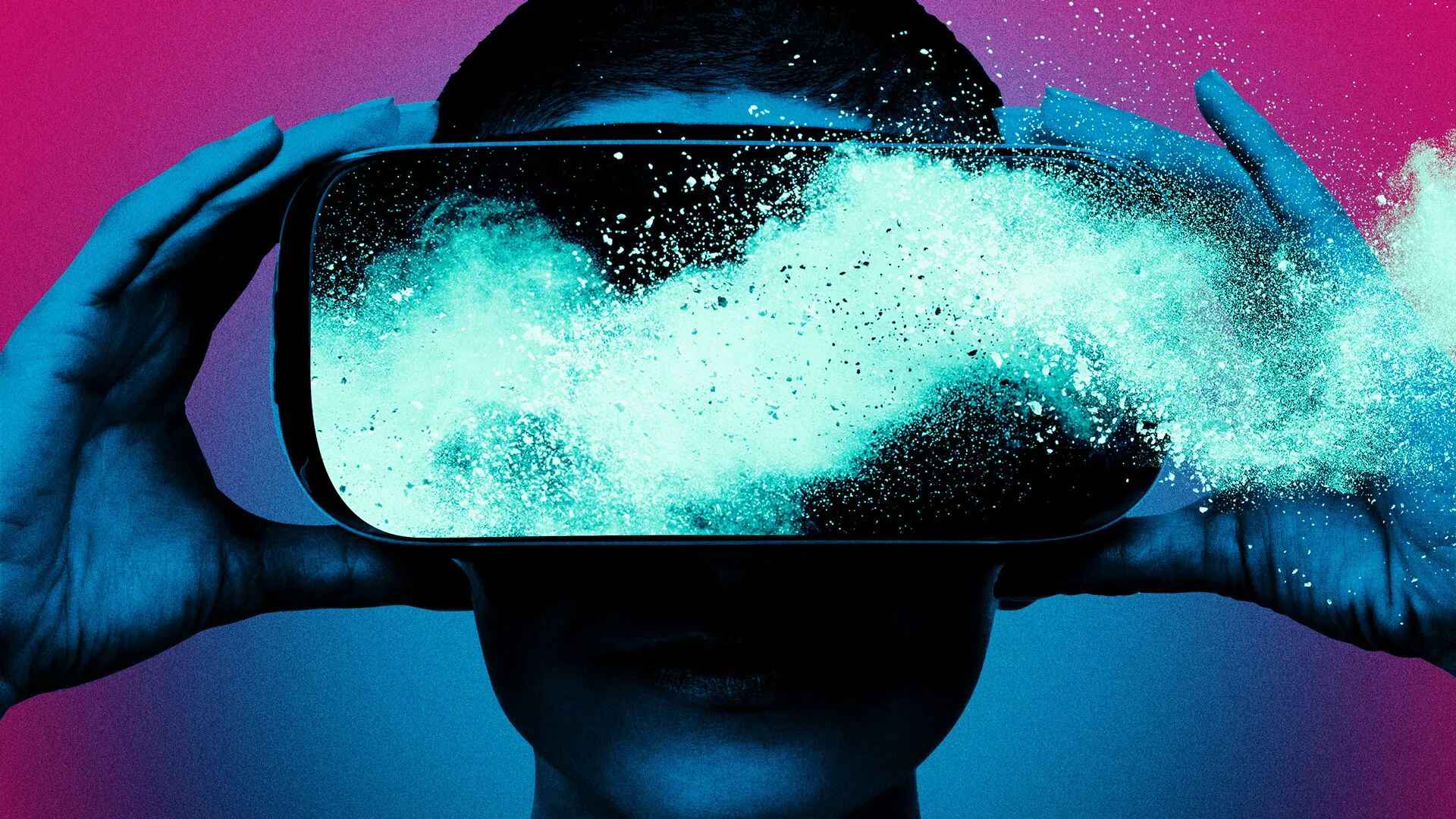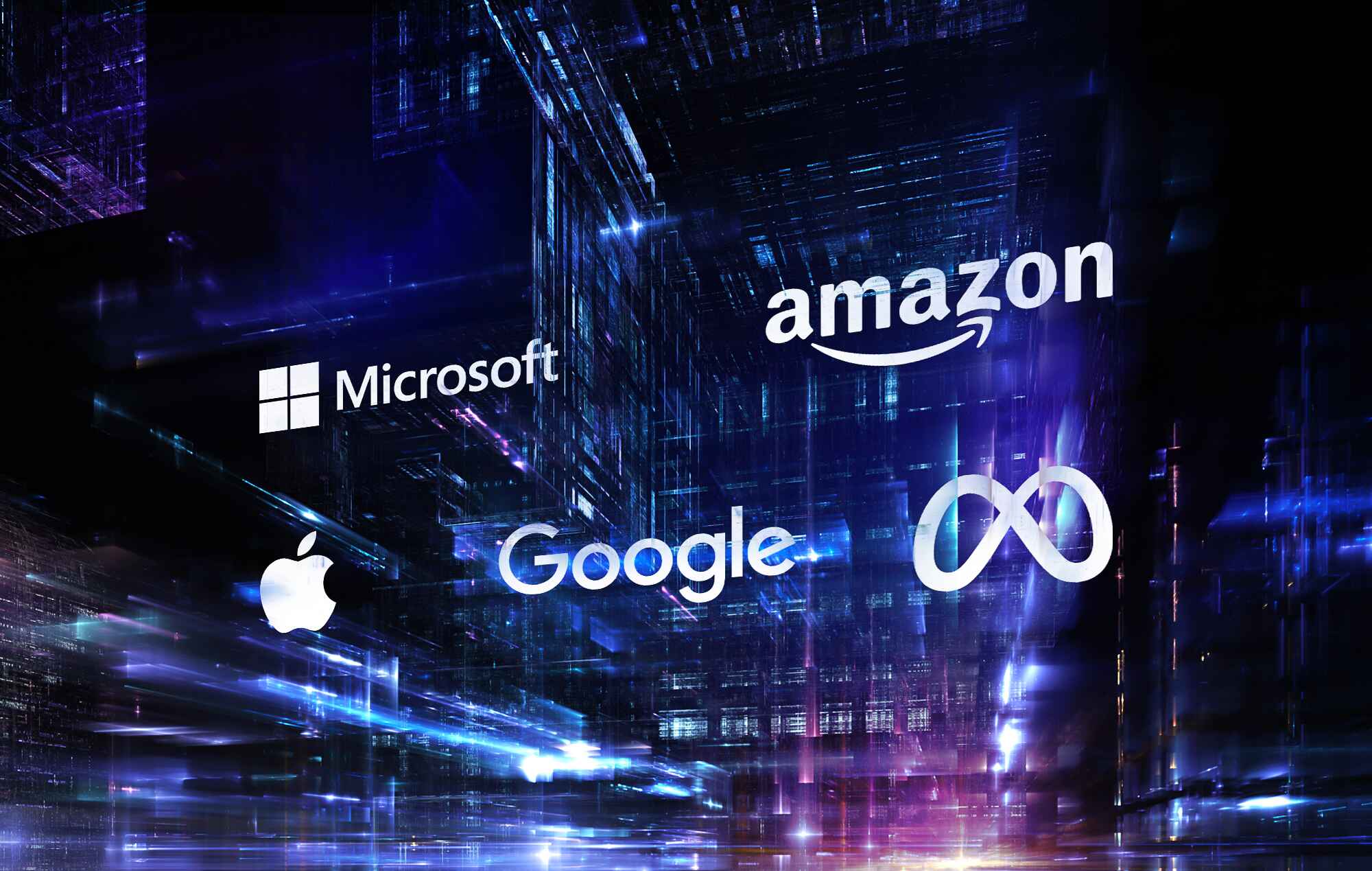What is the Metaverse?
The Metaverse is a concept that has gained significant attention in recent years. It refers to a virtual world made up of interconnected digital spaces where people can interact with each other and digital objects in real-time. Rather than being confined to a single platform or experience, the Metaverse is envisioned as a vast and immersive digital universe that transcends the boundaries of traditional online platforms.
In the Metaverse, users can explore virtual environments, engage in various activities, and create and customize their digital presence. It combines elements of augmented reality (AR), virtual reality (VR), and the internet to provide a seamless and immersive user experience. The Metaverse is not just a solitary experience; it is a shared space where individuals can interact with others, socialize, and collaborate.
Although the concept of the Metaverse may sound like something out of a science fiction novel, elements of it already exist in today’s digital landscape. Online gaming platforms, social media communities, and virtual reality experiences are all stepping stones towards the full realization of the Metaverse.
However, the true Metaverse goes beyond isolated experiences and aims to create a holistic and interconnected virtual world. It seeks to facilitate seamless movement between different digital spaces, allowing users to seamlessly transition from one activity to another with a sense of continuity.
While still in its early stages of development, the Metaverse has the potential to revolutionize various aspects of our lives, including work. By providing a digital environment that closely simulates real-world interactions, the Metaverse could reshape the way we collaborate, communicate, and conduct business.
Challenges and Opportunities of Remote Work
In recent years, remote work has become increasingly popular. The ability to work from anywhere offers flexibility and freedom, allowing individuals to create a work-life balance that suits their needs. However, remote work also presents its challenges.
One of the major challenges of remote work is maintaining effective communication and collaboration. With team members scattered across different locations, it can be challenging to ensure everyone is on the same page and working together seamlessly. Misunderstandings can arise, and the lack of face-to-face interaction can hinder the development of strong and cohesive teams.
Another challenge is the potential for isolation or feelings of disconnection. Working remotely can lead to a sense of loneliness, as the social interactions that naturally occur in a traditional office environment are absent. This can impact employee well-being and productivity.
Additionally, remote work requires individuals to be self-disciplined and have excellent time management skills. Without the structure of a physical office and the oversight of colleagues, it can be easy to become distracted or fall into unproductive habits.
However, with these challenges come opportunities. Remote work allows companies to tap into a global talent pool, accessing skilled professionals regardless of their location. This opens up new possibilities for collaboration and innovation.
Furthermore, remote work eliminates the need for daily commuting, reducing both traffic congestion and carbon emissions. It offers a more sustainable and environmentally-friendly way of working.
Moreover, remote work can enhance work-life balance, giving individuals the freedom to balance their personal and professional commitments. This flexibility can lead to higher job satisfaction, increased productivity, and improved overall well-being.
As the world transitions into a more remote-friendly work environment, it is essential to address the challenges and capitalize on the opportunities. Embracing technologies and finding innovative ways to foster communication and collaboration can unlock the full potential of remote work.
How Could the Metaverse Transform Work?
The emergence of the Metaverse has the potential to revolutionize the way we work. By creating a digital environment that closely mirrors the real world, the Metaverse could transform various aspects of work and enhance collaboration, productivity, and creativity.
One of the key ways the Metaverse could transform work is by offering virtual offices. Instead of traditional physical office spaces, companies could have virtual representations where employees can gather and interact. These virtual offices would provide a sense of presence and enable real-time communication, making remote work feel more connected and engaging.
In the Metaverse, employees could collaborate seamlessly regardless of their physical locations. They could work together on projects, share ideas, and brainstorm creatively, just as they would in a physical office environment. Virtual reality (VR) technology could further enhance these collaborative experiences, enabling employees to interact with 3D models, visualizations, and simulations in a more immersive and interactive way.
Furthermore, the Metaverse could reshape the concept of work-life balance. With virtual offices, individuals could have more control over their work environment and schedule. They could customize their virtual workspace, creating an environment that suits their preferences and promotes productivity. The ability to seamlessly transition between work and personal life within the Metaverse could lead to a more balanced and fulfilling lifestyle.
Moreover, the Metaverse could democratize access to opportunities and resources. It could provide a platform for freelancers and entrepreneurs to network, collaborate, and showcase their skills and services on a global scale. This would break down physical barriers and create new avenues for talent and innovation to flourish.
The Metaverse could also foster a more inclusive and diverse workforce. By transcending physical limitations and geographical boundaries, it could enable individuals from different backgrounds and abilities to participate and contribute to the workforce on an equal footing. This would create a more equitable and inclusive work environment.
However, while the potential of the Metaverse in transforming work is vast, there are challenges to be considered. Privacy and security concerns, potential for virtual burnout, and the need for infrastructure to support the Metaverse are some of the obstacles that need to be addressed to fully harness its benefits.
Overall, the Metaverse has the power to reshape work as we know it. By leveraging technology and creating immersive digital experiences, it could empower individuals, enhance collaboration, and unlock new levels of productivity and innovation in the future of work.
Virtual Offices in the Metaverse
One of the exciting possibilities offered by the Metaverse is the concept of virtual offices. These virtual workspaces within the digital universe have the potential to transform how we perceive and experience work. Instead of traditional physical offices, employees could gather and collaborate in immersive virtual environments.
Virtual offices in the Metaverse would provide a sense of presence, allowing employees to interact with each other in real-time, despite being physically located in different places. Through advanced technologies such as virtual reality (VR), employees can create avatars and navigate these virtual workspaces, simulating a realistic office environment.
These virtual offices can be tailored to suit the needs and preferences of individual teams and organizations. Customization options, such as choosing the layout and design of virtual office spaces, can help foster a sense of identity and ownership. Employees can personalize their workstations and create a work environment that reflects their style and preferences.
Collaboration in virtual offices can be facilitated through various interactive tools. Virtual whiteboards, for example, can enable employees to brainstorm ideas and work on projects together, providing a visual and interactive platform for collaboration. Sharing screens, documents, and presentations can be seamless and instant, enhancing productivity and efficiency.
Furthermore, virtual offices in the Metaverse can break down geographical barriers and facilitate global collaboration. Employees from different locations, time zones, and cultures can come together in a shared virtual workspace, transcending traditional limitations. This opens up opportunities for diverse perspectives and enables the formation of distributed teams that can benefit from a wide range of talent.
Virtual offices can also offer unique networking opportunities. In the Metaverse, employees can attend virtual industry conferences, seminars, and networking events without the need for physical travel. This allows for continuous learning, knowledge sharing, and professional development, all within the virtual realm.
Additionally, virtual offices in the Metaverse have the potential to enhance work-life balance. With the ability to customize their virtual workspace and flexible scheduling, employees can create a work environment that suits their preferences and promotes well-being. The seamless transition between work and personal life within the Metaverse can contribute to a healthier integration of work and personal obligations.
While virtual offices in the Metaverse offer exciting possibilities, it is important to address challenges such as connectivity, accessibility, and security. Reliable internet infrastructure and accessible technology are vital to ensure a seamless and inclusive experience for all employees. Data privacy and security measures should also be streamlined to protect sensitive information within the virtual workspaces.
Overall, virtual offices in the Metaverse have the potential to revolutionize the way we work. They offer a new paradigm of collaboration, flexibility, and global connectivity, making work more dynamic and engaging in the digital age.
Collaboration and Communication in the Metaverse
The Metaverse holds tremendous potential for transforming collaboration and communication in the workplace. By creating immersive and interactive digital environments, it offers new opportunities for teams to collaborate seamlessly and communicate effectively, irrespective of physical distances.
In the Metaverse, collaboration takes on a whole new dimension. Through virtual reality (VR) and augmented reality (AR) technologies, teams can come together in shared virtual spaces, allowing for real-time interaction and collaboration. This enables employees to work on projects simultaneously, exchange ideas, and provide instant feedback, fostering a sense of cohesion and collective effort.
Virtual whiteboards and shared document editing features within the Metaverse further enhance collaboration. Team members can brainstorm, mind map, and annotate documents together, creating a visual and interactive workspace. This promotes creativity and innovation, as ideas can flow freely in a dynamic and immersive digital environment.
Communication in the Metaverse transcends the limitations of traditional modes of communication. Instead of relying solely on text-based chats and emails, employees can use voice communication, spatial audio, and avatars to interact and communicate in a more natural and engaging manner. Non-verbal cues and gestures can be captured and expressed in the virtual realm, bringing a human touch to remote conversations.
The Metaverse also offers the potential for real-time collaboration with people from different locations around the globe. Virtual meetings and conferences can be hosted within the digital universe, where individuals can attend, interact, and network in a virtual environment. This creates a sense of global connectivity and expands the boundaries of collaboration, facilitating the exchange of ideas and knowledge on a global scale.
Furthermore, the Metaverse can address the challenges of time zone differences. With synchronous and asynchronous collaboration options, teams can work together effectively, even if they are in different time zones. Asynchronous collaboration allows team members to contribute at their convenience, overcoming the constraints of traditional office hours.
However, it’s crucial to consider inclusivity and accessibility in Metaverse collaboration. Ensuring that the digital environments are designed with accessibility in mind and that communication tools accommodate diverse users, including those with disabilities, is essential. It is important to create an inclusive virtual workplace where everyone can participate and contribute on equal footing.
As the Metaverse continues to evolve, the potential for collaboration and communication is limitless. It has the power to bridge distances, foster creativity, and create a shared sense of purpose, ultimately revolutionizing how teams collaborate and communicate in the future of work.
Work-Life Balance in the Metaverse
Work-life balance has long been a priority for professionals seeking to achieve a healthy integration of their personal and professional lives. With the advent of the Metaverse, new possibilities arise for shaping a more balanced approach to work. The immersive and flexible nature of the Metaverse offers unique opportunities to redefine and optimize work-life balance.
One of the key advantages of the Metaverse is the ability to customize and create a personalized work environment. Within the virtual realm, individuals can design their ideal workspace, adding elements that promote focus, productivity, and well-being. This level of customization allows employees to set up a virtual office that caters to their needs, preferences, and work style, contributing to a more comfortable and engaging work experience.
Flexible scheduling is another hallmark of the Metaverse that contributes to better work-life balance. Employees can choose when and where they work within the virtual environment, empowering them to align their work with their personal obligations and priorities. This flexibility allows for a more harmonious integration of work and personal life, reducing stress and increasing overall satisfaction.
Virtual reality (VR) technology within the Metaverse can also facilitate a healthy work-life balance. VR allows employees to disconnect from their physical surroundings and immerse themselves in the virtual realm, creating a boundary between work and personal life. This separation helps individuals mentally transition from work mode to leisure and relaxation, preventing burnout and maintaining well-being.
The Metaverse can level the playing field for remote workers and those with significant personal commitments. By removing physical barriers and enabling virtual collaboration, it provides equal opportunities for individuals to engage and contribute regardless of their location or personal circumstances. This inclusivity addresses the challenges that traditional work settings may present to those juggling various responsibilities, allowing greater flexibility and balance.
While the Metaverse offers great potential for work-life balance, it is important to strike a healthy equilibrium. The blur between the digital and physical realms must be carefully managed to prevent individuals from becoming overly consumed by work within the immersive virtual environment. Establishing clear boundaries and adopting mindful practices are crucial to ensuring a sustainable work-life balance in the Metaverse.
Overall, the Metaverse provides exciting opportunities to redefine and enhance work-life balance. With customization, flexibility, and the ability to disconnect and recharge, individuals can navigate their professional and personal lives more effectively, leading to increased satisfaction, well-being, and overall quality of life.
Enhancing Productivity with Virtual Reality
Virtual Reality (VR) has the potential to revolutionize productivity in the workplace by providing immersive and innovative experiences. By leveraging the capabilities of VR technology, organizations can enhance focus, creativity, collaboration, and efficiency, leading to increased productivity and better outcomes.
One way VR enhances productivity is by providing a distraction-free work environment. Within the virtual realm, individuals can eliminate physical distractions and immerse themselves in a controlled and focused workspace. This immersive experience helps employees to concentrate on their tasks without interruptions, resulting in improved productivity and attention to detail.
VR can also boost creativity and idea generation. With interactive and immersive simulations, employees can visualize concepts and designs in three dimensions, allowing for better understanding and exploration of ideas. Virtual environments provide a canvas for brainstorming, prototyping, and experimenting, fostering creativity and innovation in ways that traditional mediums may not enable.
Collaboration is another area where VR shines. Remote teams can come together in a shared virtual workspace, irrespective of their geographic locations. Through avatars and realistic spatial audio, employees can communicate and collaborate as if they were in the same physical office space. This level of collaboration enhances information sharing, idea exchange, and decision-making, ultimately leading to more efficient teamwork and collective productivity.
Complex simulations and training programs in VR can also enhance productivity by reducing the learning curve and improving skill acquisition. Employees can engage in lifelike scenarios and gain hands-on experience in a safe and controlled environment. This leads to faster learning, better retention, and improved performance in real-world situations.
Furthermore, VR can improve productivity by reducing the need for physical travel. Instead of attending meetings and conferences in person, individuals can participate virtually. This saves time, money, and resources, eliminating the productivity impact of travel. Moreover, VR offers the ability to revisit and review recorded sessions or presentations, ensuring important information is not missed or forgotten.
With the continuous advancements in VR technology, the possibilities for enhancing productivity are expanding. From data visualization to remote collaboration, task management to professional development, VR presents diverse opportunities to optimize workflows and streamline processes.
However, it is important to recognize that VR should be used thoughtfully and in balance with other work methods. Not all tasks or industries may benefit from VR, and it is essential to consider individual preferences and comfort levels. Additionally, ensuring accessibility and addressing any potential motion sickness concerns are crucial for a productive and inclusive VR experience.
In summary, VR has the potential to enhance productivity in the workplace by providing immersive and engaging experiences. By fostering focus, creativity, collaboration, and efficient training, VR can transform the way work is accomplished, leading to increased productivity and improved outcomes.
Implications for the Future of Work
The emergence of the Metaverse and immersive technologies like virtual reality (VR) is set to have profound implications for the future of work. This rapidly evolving digital landscape brings about new opportunities and challenges, shaping the way we work, collaborate, and interact in the years to come.
One of the key implications of the Metaverse is the blurring of boundaries between physical and digital spaces. As virtual environments become more immersive and realistic, the need for traditional office spaces may decrease. This opens up possibilities for remote work and distributed teams, allowing organizations to tap into global talent pools and create flexible work arrangements.
The Metaverse also has implications for workplace collaboration and communication. With virtual offices and advanced technologies, teams can collaborate seamlessly, regardless of geographical locations. Real-time interaction, shared virtual workspaces, and innovative collaboration tools enrich teamwork and drive productivity.
Moreover, the Metaverse offers opportunities for skill development and training. Immersive learning experiences through VR can provide simulated environments for on-the-job training, reducing the need for physical equipment and resources. This could revolutionize industries such as healthcare, manufacturing, and emergency services, where hands-on experience is crucial.
However, the transformative nature of the Metaverse brings challenges as well. Privacy and security concerns need to be addressed to protect user data and sensitive information within the virtual space. Accessibility should also be a priority, ensuring that the Metaverse accommodates individuals with different abilities and needs.
As the Metaverse evolves, it may disrupt traditional career paths and job roles. New opportunities for digital creators, developers, and virtual experience designers will arise, while some traditional jobs may become obsolete. This necessitates a focus on adaptability and continuous learning to thrive in an ever-changing work environment.
The Metaverse also influences work-life balance. With the ability to customize virtual workspaces and adopt flexible schedules, individuals can better integrate their personal and professional lives. This promotes well-being and offers the potential for a more harmonious and fulfilling lifestyle.
Furthermore, the Metaverse has economic implications, leading to the growth of virtual economies and the emergence of new business models. Companies and entrepreneurs can tap into virtual marketplaces, create digital products, and provide services within the Metaverse, opening up new revenue streams and opportunities for innovation.
In summary, the Metaverse and immersive technologies are poised to shape the future of work. The ability to work remotely, collaborate seamlessly, and create immersive experiences brings forth incredible possibilities. However, it is crucial to navigate the challenges and ensure inclusivity, privacy, and security as this digital frontier continues to unfold.
Conclusion
The concept of the Metaverse and its potential impact on work is undeniably intriguing. As technology continues to advance, the boundaries between physical and digital realities blur, paving the way for a new era of collaboration, communication, and productivity.
The Metaverse holds the promise of transforming the way we work, offering virtual offices that foster seamless collaboration and connection among team members, regardless of their physical locations. It has the potential to bring diverse talents together, democratizing opportunities and amplifying innovation. Virtual reality and immersive technologies within the Metaverse enhance productivity, creativity, and skill development, offering new and engaging ways of working and learning.
Work-life balance also stands to gain from the Metaverse. The ability to customize virtual workspaces and create flexible schedules empowers individuals to achieve a better integration of their personal and professional lives, promoting well-being and a sense of fulfillment.
However, challenges exist as well. Privacy, security, and accessibility must be addressed to ensure a safe and inclusive experience within the Metaverse. The potential impact on traditional job roles and the need for continuous learning call for adaptability and resilience in navigating the changing landscape of work.
The future of work in the Metaverse holds great promise, but it will require careful consideration, planning, and adaptation. As we embrace the possibilities of this immersive digital frontier, striking a balance between technological advancements and human needs will be essential.
Ultimately, the Metaverse has the potential to reshape work as we know it, enabling us to collaborate seamlessly, broaden our horizons, and create a more balanced and fulfilling work environment. As technology continues to evolve, it is crucial to harness the power of the Metaverse in a way that serves the needs of individuals, organizations, and society at large.
























